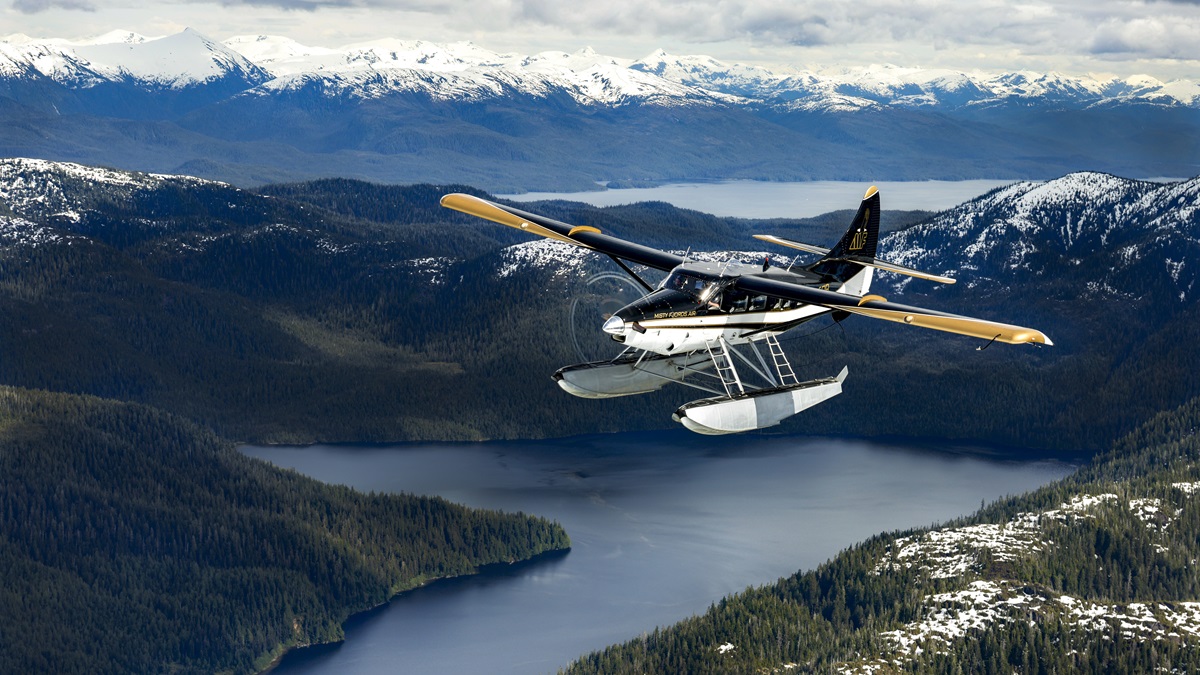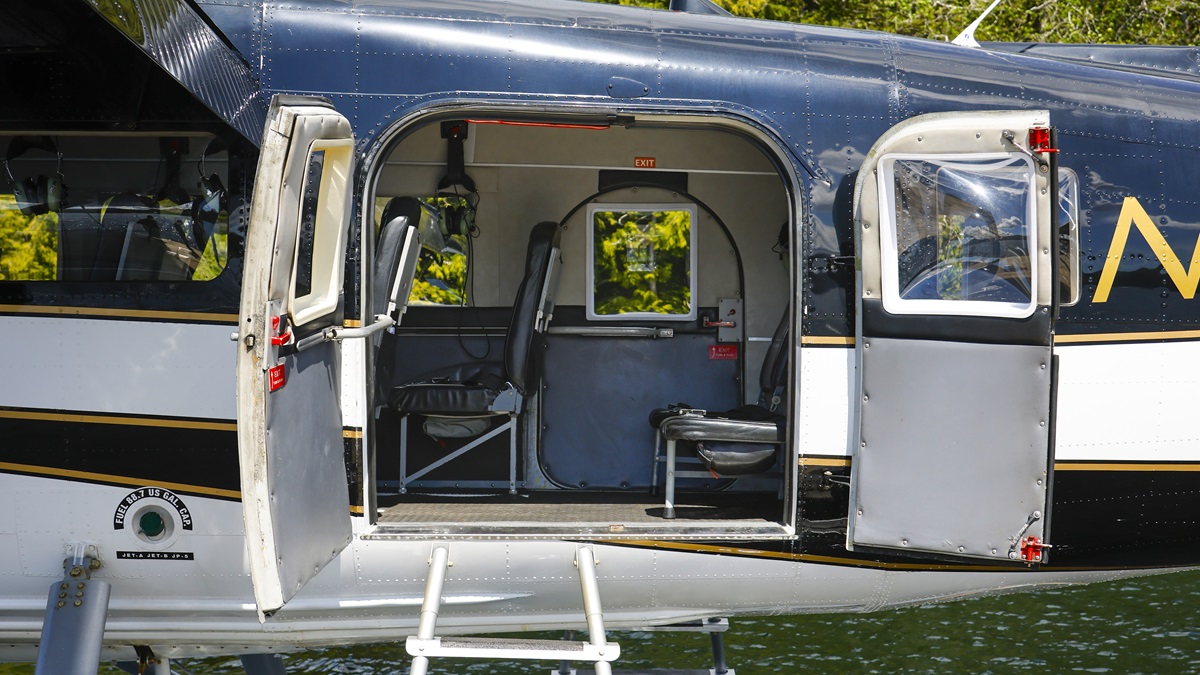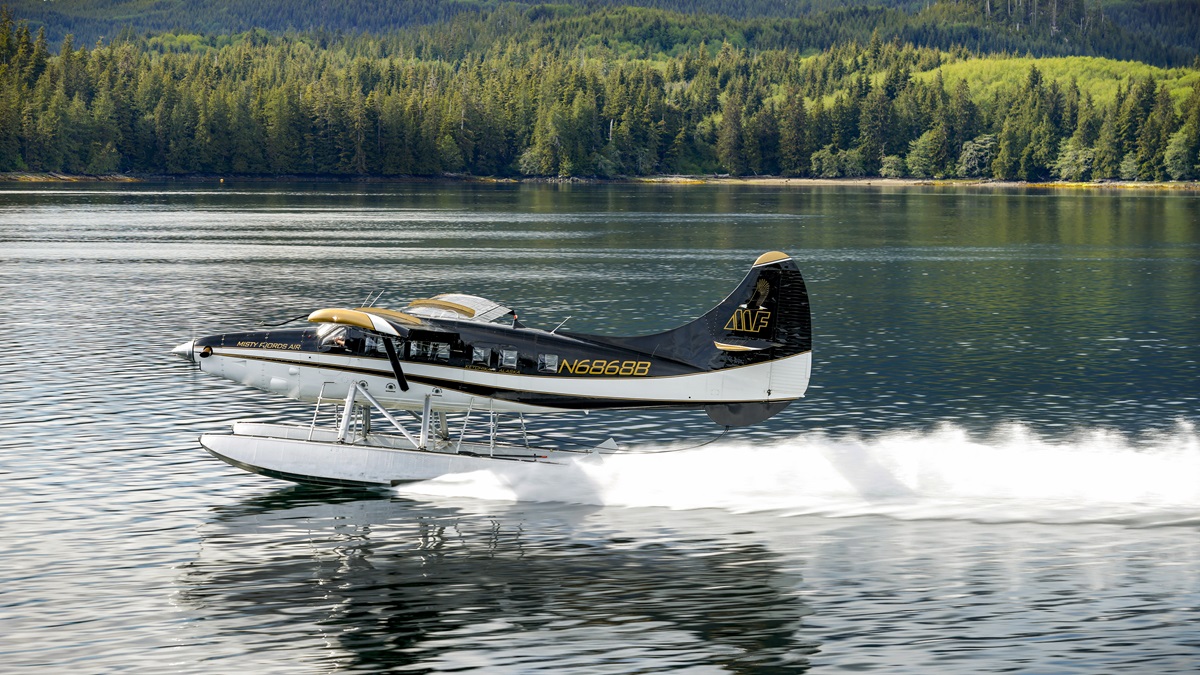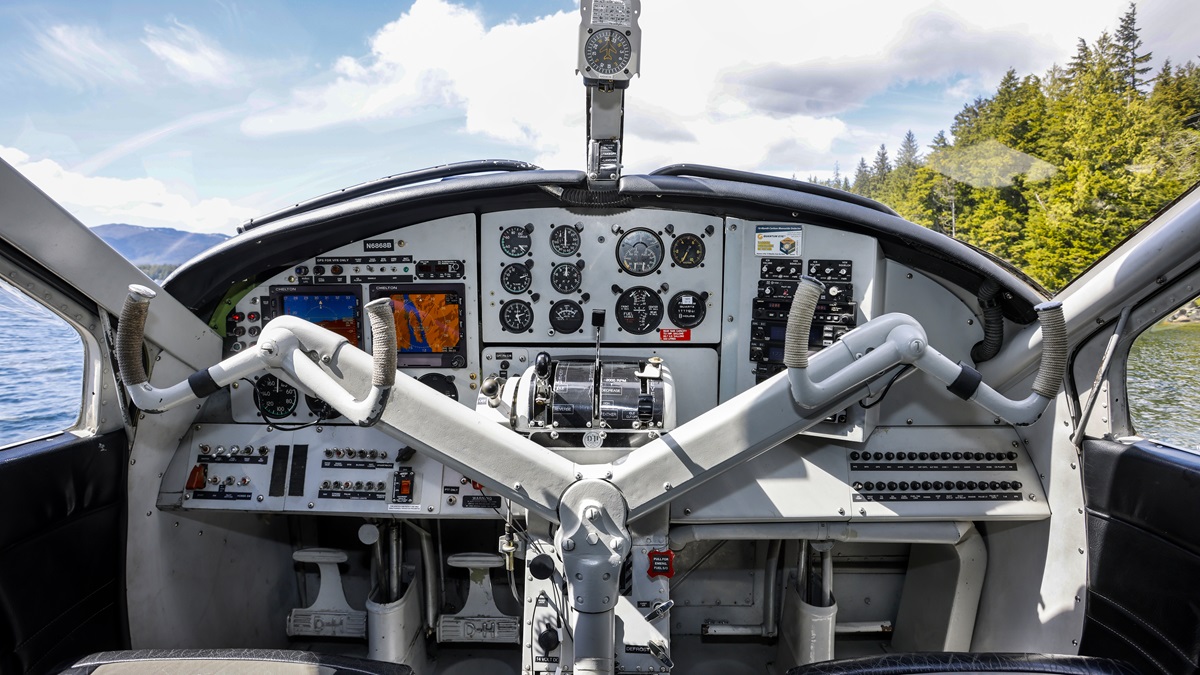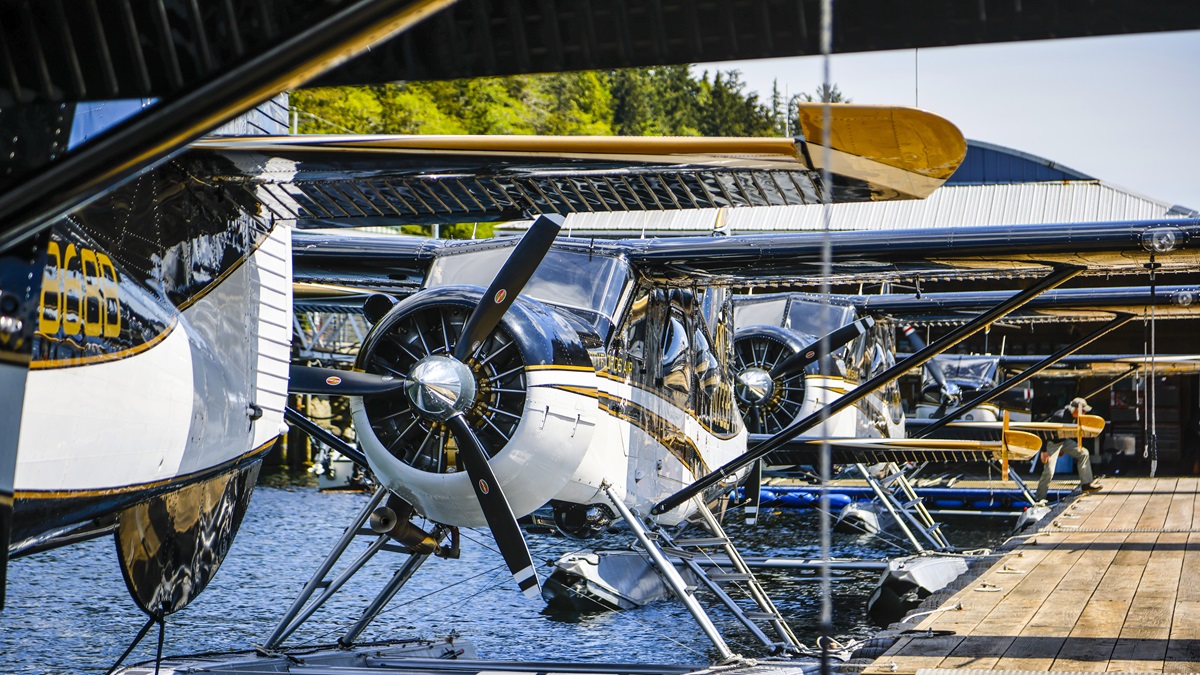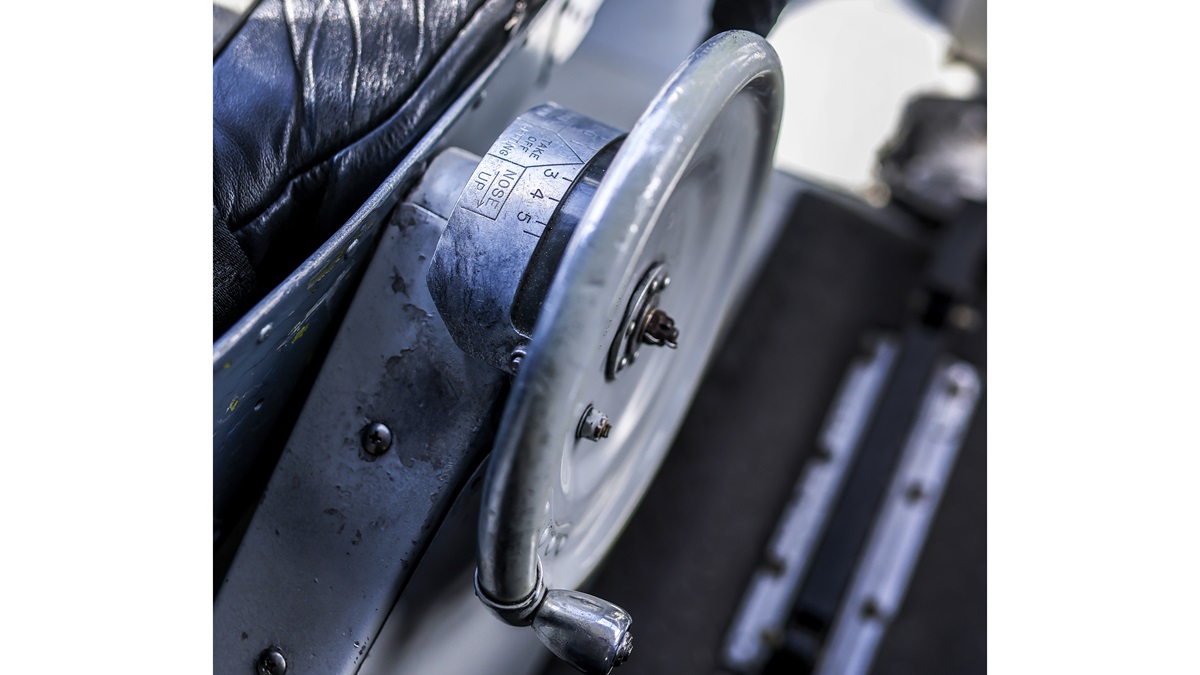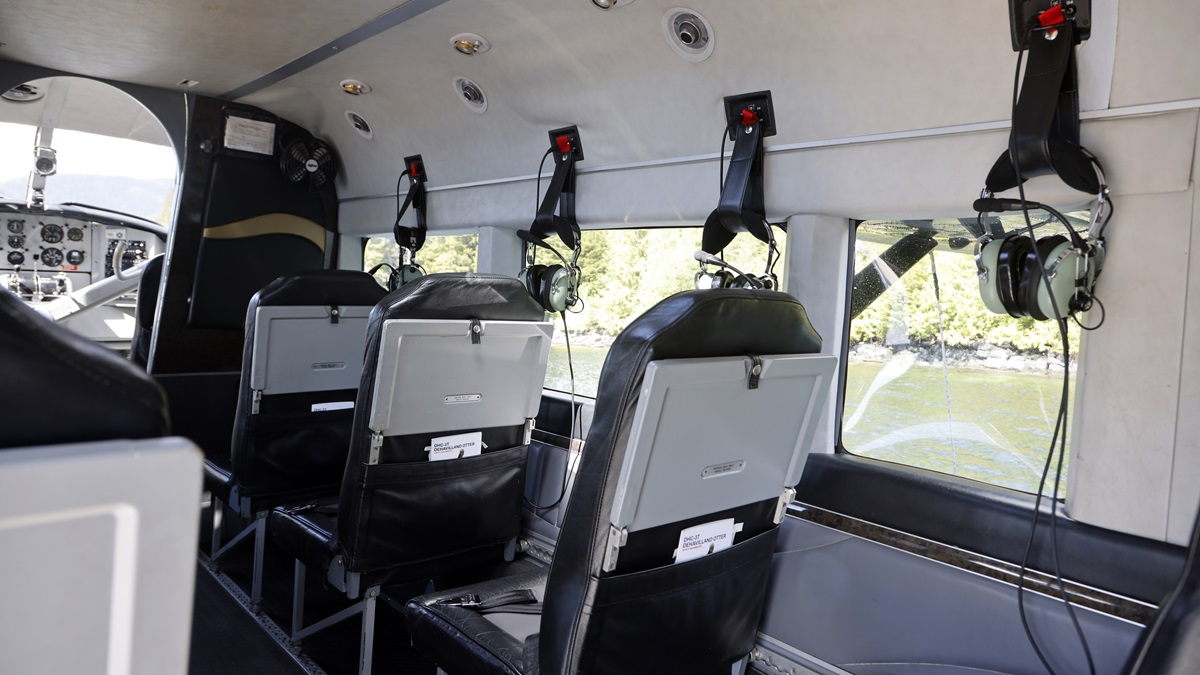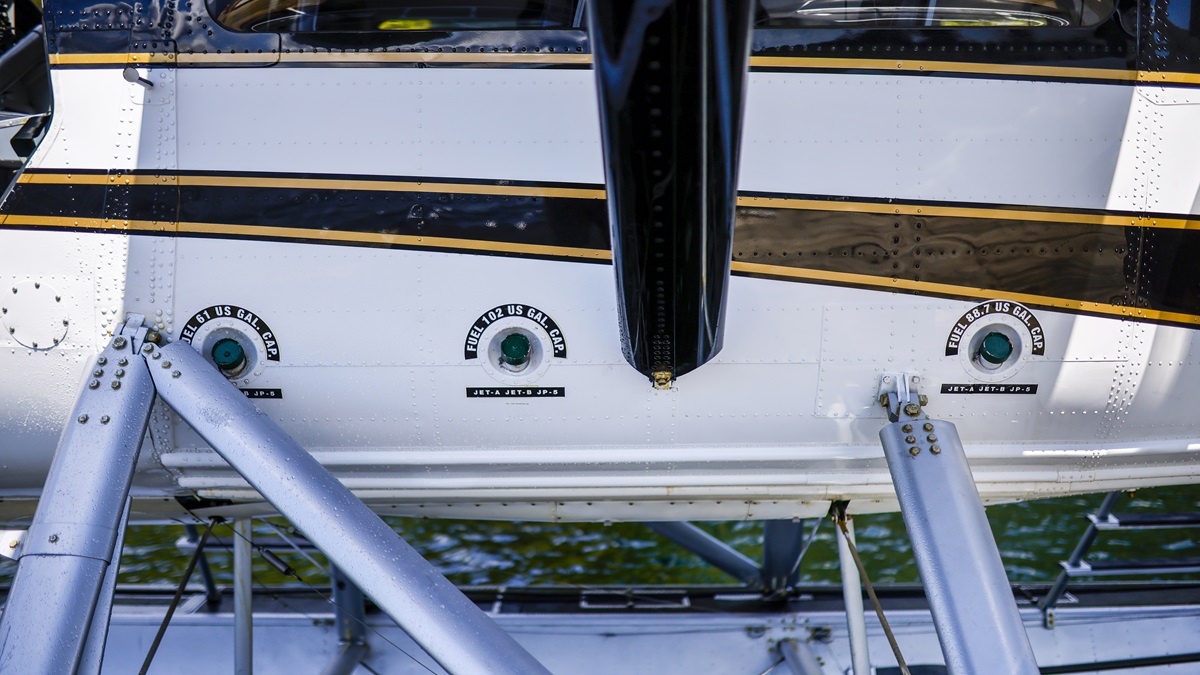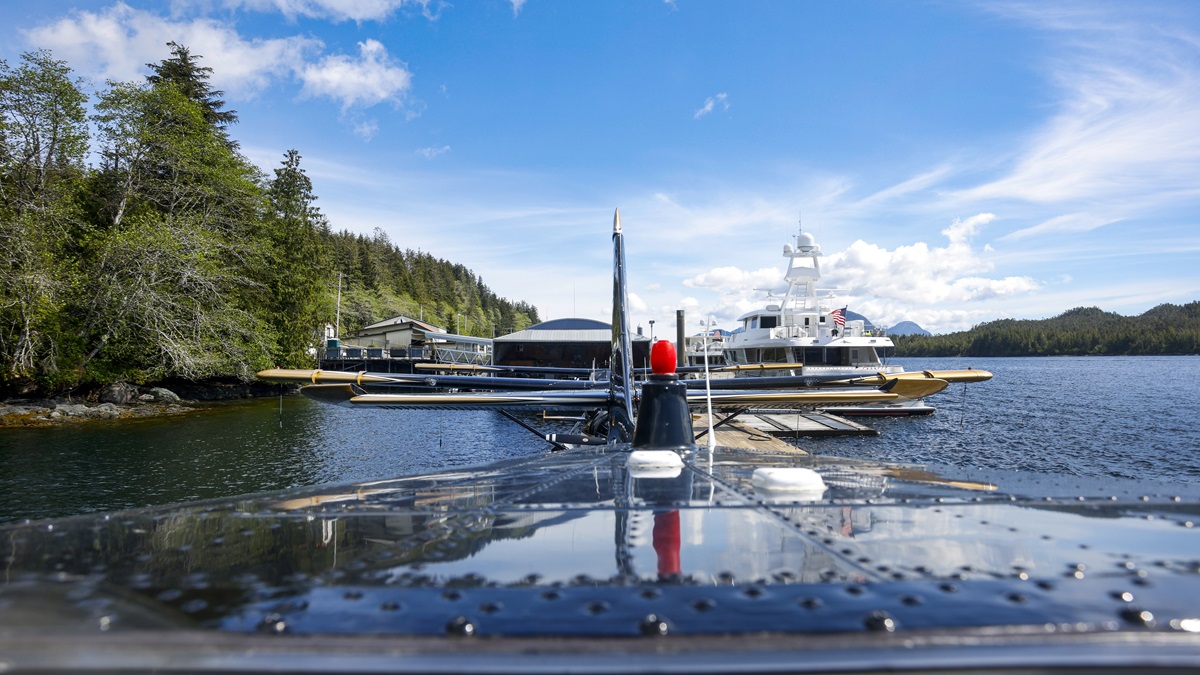Rugged and remarkable
An Alaskan airplane that suits its surroundings
A 10-knot north wind and boat wakes create waves in the bustling canal, but the muscular 750-horsepower de Havilland with Edo floats cuts through the chop and is airborne in 15 seconds.
As soon as the airplane is off the water and climbing, Misty Fjords Air Chief Pilot David Doyon Jr. raises the flaps and lets the moderately-loaded Otter accelerate to 90 knots. Then he starts a 180-degree left turn to the south and levels off at 1,000 feet.
“Most de Havillands require flaps for the climb, but not the Turbine Otter,” says Doyon, 45, who’s flown both piston and turboprop Otters and Beavers in Southeast Alaska since 2002. “It’s got plenty of power, and the cuffed wing and broad span provides more than adequate lift, even with the flaps up.”
It’s an unusually clear 65-degree day in this regularly rainy region, and the 11-seat Otter climbs at 90 knots and 1,000 feet per minute—roughly twice the climb rate as the 450-horsepower piston Beavers that Misty Fjords, a Part 135 air charter firm, also operates for sight-seeing, air cargo, and passenger flights.
The Otter burns twice as much fuel per hour as the piston airplanes, but the kerosene-based jet fuel typically costs half as much as avgas.
“The Otter’s higher speed and larger payload actually make it more cost-effective to operate on many of our missions,” Doyon says. “It’s a real workhorse for us.”
King Beaver
Canadian aircraft manufacturer de Havilland started building Otters in 1951 after the rugged DHC–2 Beaver became a backcountry sensation. The airplane’s toughness, reliability, load-hauling capacity, and responsive and beautifully balanced handling characteristics made it a hit the world over. De Havilland originally called its DHC–3 the “King Beaver” to capitalize on its predecessor’s popularity, but then decided the clean-sheet design deserved its own animal identity.
Otters came from the factory with geared 600-horsepower Pratt & Whitney R-1340 engines, and just about everything about them was upsized. The Otter has a far larger cabin; it’s made to operate on wheels, floats, or skis; and its payload was twice as much as a Beaver.
Control harmony is very good, although the ailerons are slightly heavier than the elevator, and the rudder is heaviest of all.The Otter also includes changes: a cruciform tail to prevent the horizontal stabilizer from getting nicked by rocks at gravel strips, and highly efficient Fowler flaps instead of the Beaver’s slotted flaps. De Havilland built and sold 466 from 1951 until 1967, and the U.S. Army was the largest customer with 200 of them.
The first Turbine Otter flew in 1963 with a Canada-built Pratt & Whitney PT6A engine. Today, Viking Aircraft Ltd. of Vancouver owns the type certificate, supplies spare parts, and performs turbine conversions.
The Misty Fjords Air Otter was built in 1958, and it’s had many modifications including a glass-panel Chelton avionics upgrade, STOL kit, improved passenger seats, bubble passenger windows, and a skylight.
Misty Fjords planned to use the Otter primarily for flightseeing tours for cruise ship passengers, but it pressed the airplane into cargo service during the two-year COVID-19 cruise ship shutdown.
“It does a great job for us as a cargo plane,” Doyon said. “I carry up to five [55-gallon] drums of fuel in the back or 60 [50-pound] fish boxes.” The Otter on floats weights 5,600 pounds empty. Max gross is 9,000 pounds, and its useful load is 3,400 pounds.
“It’s got a very wide center-of-gravity envelope, so putting big people in the back of the airplane is just fine.”
On the dock
The Otter looks impossibly tall on the water, and its huge, rounded tail is accentuated by a ventral fin beneath it. The ventral fin is part of the floatplane kit, and it counters the inherent yaw instability that floats induce. Three fuel tanks—rubber bladders holding a combined 252 gallons—are in the belly so they’re easy to fill.
There are doors on both sides of the cockpit as well as the rear fuselage. A baggage area in the aft fuselage holds up to 650 pounds.
The cockpit itself is exceptionally wide, and the seats move higher as they slide forward. This airplane was one of the original participants in the FAA’s pioneering Capstone program (1999 to 2006) that proved the safety benefits of in-cockpit weather, terrain warnings, and traffic displays which lowered the accident rate here by 40 percent. A two-screen Chelton panel with GPS-derived synthetic vision and Garmin 480 have safely guided it for nearly two decades throughout an exceptionally demanding region for flying.
Analog engine gauges are standard for the PT6A-34, and a digital fuel computer backs them up. The power, propeller, and condition levers are on a pedestal in the center of the cockpit, easily reachable by the left or right-seat pilot, and there are dual control yokes.
The flap position indicator is prominent in the center of the panel atop the glareshield—a strong hint from the designers regarding the paramount importance of properly setting the flaps in all phases of flight.
The elevator trim wheel is oddly placed on the right side of the pilot’s seat, as is the hydraulic pump handle for moving the flaps. It’s up to the left-seat pilot to perform those tasks even when the right-seat pilot is flying.
Unique capabilities
Each flight begins at the neatly ordered dock at Misty Fjords. Engine start is standard for a PT6A, and Doyon shifts the prop out of feather as we push off.
Tides move up to 18 feet a day in this region, and Doyon stresses the importance of having forward motion for positive steering to counteract surface winds and powerful currents. We water taxi into the main channel, check the ATIS at nearby Ketchikan International Airport, then raise the water rudders, set flaps to the 40-degree takeoff setting, and push the prop lever to high pitch (2,200 rpm) and the condition lever to high idle.
Doyon advances the power lever to 58 foot-pounds of torque and holds the yoke nearly full aft as the Otter begins its splashy takeoff run. It’s on the step in about five seconds and Doyon releases most of the back-pressure. After 10 more seconds of chattering across the rippled water surface, an even tug on the yoke gets the Otter airborne, and instantly, the ride becomes smooth. Doyon reduces torque to 52 foot-pounds and prop rpm to 2,000, then accelerates to 90 knots and raises the flaps during the initial climb.
Visibility is excellent through the expansive front windshield and large, triangular side windows. Control harmony is very good, although the ailerons are slightly heavier than the elevator, and the rudder is heaviest of all.
“After a full day of flying, my knees get sore from pushing those rudders around,” Doyon said. “Climbing in and out of the airplane and steering with those water rudders is a good leg workout.”
The center fuel tank serves as the header tank, and the pilot must manage the fuel load to keep it as full as practical. If the fuel transfer pumps in the front and rear tank fail, the only available fuel resides in the center tank.
“A smart Otter pilot keeps the center tank pretty full,” Doyon said. “You want to stay ahead of it.”
We climb to 3,000 feet, set the prop to 1,800 for low cruise, and maneuver over the water on our way to the Misty Fjords National Wildlife Area, a two-million-acre reserve with jaw-dropping views of granite cliffs that rise 3,000 feet from the ocean, mirror-smooth lakes in glacial valleys, and abundant wildlife.
The Otter cruises at 125 knots burning about 45 gallons of jet fuel an hour. Doyon gently guides the airplane with one hand, the yoke resting between his left thumb and index finger. Any change in airspeed or engine power requires adjusting the elevator trim.
The airplane’s obedient nature inspires confidence, but Doyon warns there are two areas where the Otter’s agreeable personality turns ornery.
“The biggest gotcha is that the Otter can stall at nearly cruise speed with a heavy load when the flaps are up and the pilot pulls hard during a steep turn,” he said. “Then the torque can roll the airplane inverted.” Steep turns with partial flaps, however, are extremely forgiving and the Otter can turn around using minimal real estate.
“One strategy for taking off from a small lake surrounded by high terrain is to leave takeoff flaps set and spiral upward,” Doyon says. “It’s as close to helicopter performance as you can get in a fixed-wing airplane. The airplane seems to levitate.”
Doyon’s other warning: Never to use the full 60-degree flap setting.
“Full flaps tend to wash out the elevator and rudder and reduce their effectiveness,” he said. “There’s no reason ever to use full flaps when an Otter’s on floats.”
Doyon performs a series of steep turns at 70 knots at the 40-degree takeoff flap setting, and there’s no hint of an approaching stall. With flaps up, however, the rudder pedals chatter, the tail buffets, and the stall warning light blinks. (There’s no aural stall warning horn.)
A simulated engine failure with the prop feathered produces a manageable descent rate of 1,200 feet per minute at 90 knots.
“It’s very comfortable,” he said. “There’s nothing dramatic about it.”
When flying VFR in low visibility, Doyon sets partial flaps, slows to about 75 knots, and follows familiar routes and landmarks.
“Adding flaps raises the tail and provides excellent forward visibility,” he said. “We’re allowed to fly VFR in Alaska in visibility as low as two miles, and that’s no trouble at all in the Otter.”
Otter operators regularly haul external loads such as canoes and boats attached to the floats, and the airplane seems to handle them with ease.
The surface wind is 14 knots as we approach for landing at the Ketchikan waterfront. Doyon sets the flaps to 40 degrees and descends at 80 knots. We slow to 70 knots, flare, and touch down at about 58 knots in a roughly 5-degree nose-up attitude. Doyon pulls the prop to flat pitch and the Otter’s floats settle into the water in about 300 feet. Reverse thrust can stop the airplane even quicker.
Docking in the wind and current requires precision, and Doyon says he likes to keep the airplane moving forward for positive control. As soon as a dock hand secures a line to the front of a float, Doyon pulls the prop into reverse, and that pulls the airplane snugly against the dock. Two more lines are quickly secured while Doyon feathers the prop, lets the engine temperatures stabilize, and moves the condition lever to the off position. Three seconds later, he shuts off the fuel pump and the electrical master switch.
“There are very few airplanes that can compete with the Turbine Otter in this part of the world and the way we use it,” Doyon said. “I feel fortunate every day I get to go out and fly it here. We appreciate its unique capabilities, and so do our customers.”

